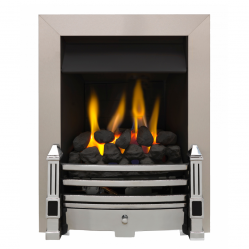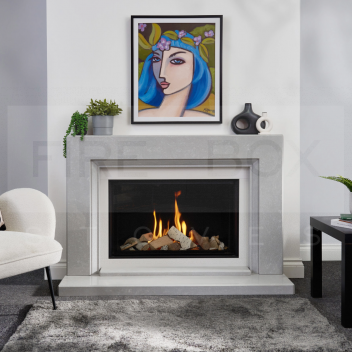Technical Details
| Product Title | Infinity 780FL Mk2 CF Gas Fire, Black Glass Liner |
|---|---|
| Product Keyword | Infinity 780FL Mk2, CF Gas Fire, Black Glass Liner, High Efficiency Fireplace, Contemporary Gas Fireplace |
| Energy Efficiency | D |
| Output (Nominal) | 4.8kW |
| Output (Maximum) | 6.6kW |
| Fuel | Gas - NG |
| Height | 605mm |
| Width | 780mm |
| Depth | 277mm |
| Nominal Output (Range) | 3kW - 5kW |
| Width (Range) | 700mm - 800mm |
| Nett Efficiency (%) | 81% |
| Style | Modern |
| Chimney Type | Class 1 & 2 |
| Height (Range) | 600mm - 700mm |
Product Description
Infinity 780FL Mk2 CF Gas Fire with Black Glass Liner
Experience the perfect blend of style and functionality with the Infinity 780FL Mk2 CF Gas Fire, complete with an elegant black glass liner. This state-of-the-art gas fire is designed to enhance the ambiance of any modern living space.
- High-efficiency gas fire technology for reduced energy consumption and lower bills
- Stunning black glass liner for a sleek, sophisticated appearance
- Conventional flue system compatible with most existing chimneys for easy installation
- Generous heat output to comfortably warm your space
- Front-facing design for maximum visual impact and heat distribution
- Easy-to-use control options for convenience and comfort
- Environmentally friendly, complying with the latest safety and efficiency standards
- Durable construction ensures longevity and reliability
- Designed for seamless integration into your living environment
File Downloads
Reviews
Gas Fires > Gas Fires for a Class 2 Chimney

Gas Fires for a Class 2 Chimney
Class 2 chimneys are designed for use with gas or electric appliances, but never solid fuel (wood, coal or smokeless fuels). These can be prefabricated structures which are built up through the house in sections and terminate at the roof with a metal flue terminal or ridge vent or can be installed using a conventional gas flue system but in an existing or prefabricated chimney stack. Class 2 chimneys are commonly classed by the diameter- 5-inch diameter or under usually implies the chimney is class 2, whereas a diameter of 7 inches or more will imply the chimney is class 1. There are always discrepancies and exceptions with these two chimney classes in relation to fitting a gas fire, so if you are in any doubt, consult Document J of Building Regulations or refer to the manufacturer’s installation instructions or alternatively, get in touch with one of our expert advisors and we will be happy to assist.





